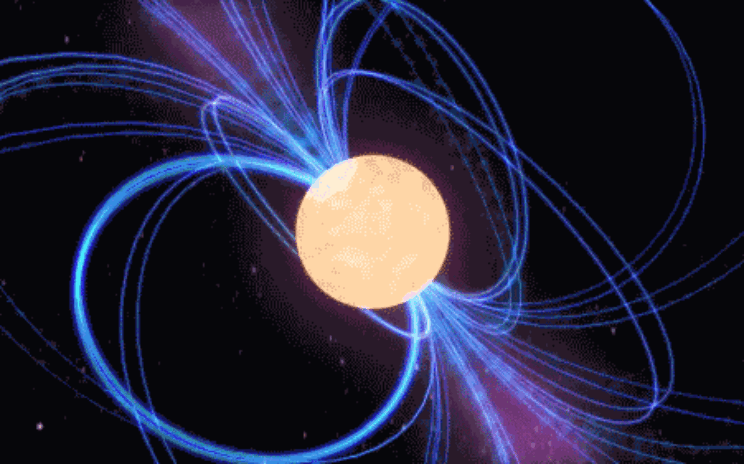Reshared post from +annarita ruberto Pulsars, a kind of cosmic lighthouses The Pulsars (Pulsating Radio Sources) are rapidly rotating neutron stars with a very high magnetic field, which emit a collimated beam of radio waves.The radio emission, coming from the magnetic poles of the star, is confined within a small cone of emission and, if the magnetic axis is not aligned with the rotational one, the neutron star acts as a sort of cosmic lighthouse and an observer on Earth will see a sequence of pulses of radio waves. Let's see how a pulsar comes into being. When a massive star, exhausted its nuclear fuel, ends its life, it happens a supernova explosion and it remains a compact remnant . This object, named Neutron Star, has a radius of about 10 km and a mass equal about to 1.5 that one of the sun (whose radius is 700,000 miles). A Neutron Star is thus the "ash" that remains when a massive star collapses on itself and burns. The gravity force prevails on the electronic force that holds the atoms separated from each other and compresses them into a mass ten trillion times denser than a lead block. A single teaspoon […]
If I could I would want to see a neutron star before I die.. Originally shared by +annarita ruberto Pulsars, a kind of cosmic lighthouses The Pulsars (Pulsating Radio Sources) are rapidly rotating neutron stars with a very high magnetic field, which emit a collimated beam of radio waves.The radio emission, coming from the magnetic poles of the star, is confined within a small cone of emission and, if the magnetic axis is not aligned with the rotational one, the neutron star acts as a sort of cosmic lighthouse and an observer on Earth will see a sequence of pulses of radio waves. Let's see how a pulsar comes into being. When a massive star, exhausted its nuclear fuel, ends its life, it happens a supernova explosion and it remains a compact remnant . This object, named Neutron Star, has a radius of about 10 km and a mass equal about to 1.5 that one of the sun (whose radius is 700,000 miles). A Neutron Star is thus the "ash" that remains when a massive star collapses on itself and burns. The gravity force prevails on the electronic force that holds the atoms separated from each other and compresses them […]
Does this qualify for #sciencesunday Buy this and you can enforce your own Drunk test at your own front door Whether you know it or not, geeks have an intimate association with the word "labrys." It's Greek for "double-headed axe" (a thing in and of itself well loved and lauded by geek-kind) and gave rise to the term "labyrinth." We are all guilty of wandering through many labyrinths – some in the guise of dungeons (with and without dragons), some surrounded by scrolling green "computer symbols," and some through the awkward social interactions of everyday life (especially those with members of the opposite sex). And speaking of the opposite sex, pretend for a moment that you actually get one to come over to your "labyrinth of love" – how do you stop them from leaving? Piece of cake with the Defendius Labyrinth Security Lock. This innovative lock is designed by Art Lebedev Studio… responsible for the amazing Optimus Maximus keyboard with a tiny screen on each key. Constructed of 100% titanium alloy, nothing less than a level forty-two spell of ultimate cutting will break the Defendius lock open. Really, just look at it: no one is getting out easily. […]


